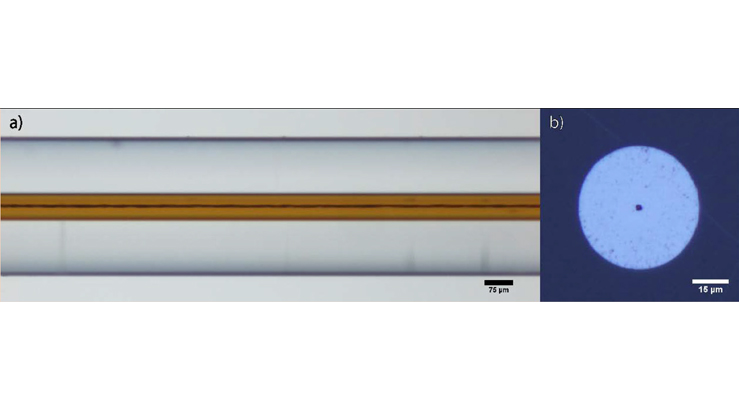Transition Metal Doped II-VI Semiconductor Optical Fibers
ID# 2016-4467
Technology Summary
Inventors have developed novel compositions of, and methods to produce, transition metal doped II-VI semiconductor optical fibers. These fibers have many attractive characteristics, including high efficiency, and exceptional tunability of laser properties. By changing the transition metal or host material, the emission wavelength tuned over much of the mid-Infrared (IR). High pressure chemical vapor deposition (HPCVD) allows for a uniform doping concentration along centimeter length scales, overcoming significant technological disadvantage to current doping schemes. Using HPCVD, the inventors created Chromium doped Zinc Selenide (Cr2+:ZnSe ) optical fiber. Inventors have demonstrated that Cr2+:ZnSe optical fibers guide high powers of infrared light, suggesting they hold promise for applications such as non-linear frequency conversion and high power fiber lasers.
Application & Market Utility
Transition metal doped II-VI semiconductors have transmission windows that extend into the IR making them very useful for applications such as chemical and thermal sensing, infrared countermeasures, stand-off detection of explosives, & nonlinear optics. As an example, Cr2+:ZnSe is the only known gain medium to function with a high quantum efficiency in the important wavelength region from 2 to 4 microns. An Cr2+:ZnSe optical fiber may allow for ultrafast applications & be used in chemical detection, biomedicine, infrared countermeasures, and astronomical applications.
Next Steps
Seeking research collaboration and licensing opportunities.

